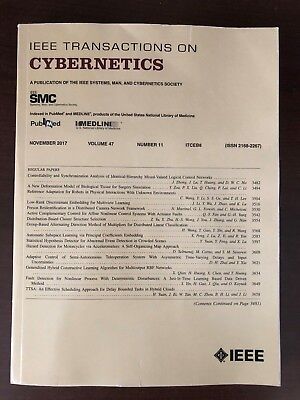用于进化算法解决双层优化问题的高效代理建模方法
IF 9.4
1区 计算机科学
Q1 AUTOMATION & CONTROL SYSTEMS
引用次数: 0
摘要
本研究的目的是开发一种具有双层代理建模的进化算法(EA),称为 BL-SAEA,用于解决双层优化问题(BLOPs),在这种问题中,上层问题的求解取决于相应下层问题的最优性。本文的动机在于,每个上层解决方案所需的大量下层优化会消耗过多的函数求值,从而导致 EA 的优化性能低下。为此,在上层优化过程中,BL-SAEA 会建立一个上层代用模型,为下层优化选择几个有希望的上层解决方案。由于只有少数上层解决方案需要进行下层优化,因此可以大大减少函数评估的次数。在低层优化过程中,BL-SAEA 会构建多个低层代理模型来初始化低层优化的群体,从而进一步减少函数评估次数。在两个广泛使用的基准和两个现实世界 BLOP 上的实验结果表明,我们提出的算法在有效性和效率方面优于六种最先进的算法。本文章由计算机程序翻译,如有差异,请以英文原文为准。
Efficient Surrogate Modeling Method for Evolutionary Algorithm to Solve Bilevel Optimization Problems
The purpose of this study was to develop an evolutionary algorithm (EA) with bilevel surrogate modeling, called BL-SAEA, for tackling bilevel optimization problems (BLOPs), in which an upper level problem is to be solved subject to the optimality of a corresponding lower level problem. The motivation of this article is that the extensive lower level optimization required by each upper level solution consumes too many function evaluations, leading to poor optimization performance of EAs. To this end, during the upper level optimization, the BL-SAEA builds an upper level surrogate model to select several promising upper level solutions for the lower level optimization. Because only a small number of upper level solutions require the lower level optimization, the number of function evaluations can be considerably reduced. During the lower level optimization, the BL-SAEA constructs multiple lower level surrogate models to initialize the population of the lower level optimization, thus further decreasing the number of function evaluations. Experimental results on two widely used benchmarks and two real-world BLOPs demonstrate the superiority of our proposed algorithm over six state-of-the-art algorithms in terms of effectiveness and efficiency.
求助全文
通过发布文献求助,成功后即可免费获取论文全文。
去求助
来源期刊

IEEE Transactions on Cybernetics
COMPUTER SCIENCE, ARTIFICIAL INTELLIGENCE-COMPUTER SCIENCE, CYBERNETICS
CiteScore
25.40
自引率
11.00%
发文量
1869
期刊介绍:
The scope of the IEEE Transactions on Cybernetics includes computational approaches to the field of cybernetics. Specifically, the transactions welcomes papers on communication and control across machines or machine, human, and organizations. The scope includes such areas as computational intelligence, computer vision, neural networks, genetic algorithms, machine learning, fuzzy systems, cognitive systems, decision making, and robotics, to the extent that they contribute to the theme of cybernetics or demonstrate an application of cybernetics principles.
 求助内容:
求助内容: 应助结果提醒方式:
应助结果提醒方式:


